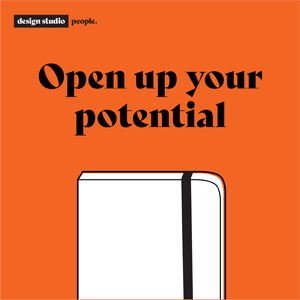The number one question I get from designers, even after (cough) 20 years in the industry, will always be ‘do you have any advice on my portfolio?’.To be honest if I don’t get asked that I do wonder a little as to the motivation of the designer.
As a designer you will always strive for perfection. From that unsatisfactory kerning that was the compromise over deadline to the image that gave way to cost over perfection. YOU always notice what can be done better.
The same applies to your portfolio. Others will see a slick well thought out presentation but you will see the things you are not happy about. This brings us to RULE 1. Never apologise for your folio.
Be proud. If you apologise it will come across as negative. If you are not happy change it, but don’t change it for the sake of it. Everyone’s folio is a living, dynamic document that by nature should always be in beta stage. As a designer you will always crave for perfection. Remember perfection is rare (although never give up striving for it) and as you gain experience you will see things in your work that you wish you had done differently. This is normal. This is how everyone will look at their portfolio, and their career . Resist visiting it daily but always give it a 6 monthly (yearly max) review. Even if you are not looking for a job always be ready as that perfect opportunity may open up anytime.
The folio is a story about you. Its not just a tool to get a new job its more than that. If you focus on just getting a job then you are in danger of focusing on executional skills or what your potential employer wants to see rather than what you strive for. A portfolio should tell an engaging story about you, showing that you are capable of doing the job in hand but also show your passions, your goals and your strengths. RULE 2 – SHOW YOU in your book. What you are about creatively.
Yes, as a designer we all have to do those mundane jobs but if your folio doesn’t show the creativity and passion how do you get the opportunity to shine?
Our most common complaint from clients amongst grads for example is lack of creativity. Remember creativity can be reined in but you cannot make someone more creative than they are. SHOW IT.
RULE 3. A golden rule. Don’t have too much/don’t have too little work in your book. It may seem an impossible balance especially as I am not going to give you a set limit.
Sometimes it can be trial and error to find the balance but once you have that balance then follow then follow the GOLDEN RULE , one project must come out before you put another one in. It’s hard to lose a much loved portfolio piece but its essential to keep you book fresh and to the highest quality it can be.
Nothing raises alarm bells more than a folio full of work before 2010. At best the work is dated at worst it suggest you haven’t been involved in any meaningful design projects for while. If you don’t have portfolio worthy work then conceptualise and recreate your work. Rule 4. BE CURRENT. The design world (and the world in general) is moving at an alarming pace. Keep up.
RULE 5 – PRESENTATION.Be confident, take care to prepare your presentation, show your peers. Treat every portfolio presentation like a client pitch. They haven’t seen you work before so present like they are the first person to see the work you are so excited about. Nothing will have a CD heading for the door quicker than a shoddy portfolio. Clients will put as much emphasis on how the portfolio looks and is presented as what is in it.
Ok so 5 rules may not be an exhaustive list of rules but we are all creative so we don’t want too many rules (and if you don’t like rules lets just call them guidelines instead). Everyone will have a different opinion of what is right and wrong but follow these and you wont go too far wrong.
At DSP we are always keen to hear your opinions on this or simply any humorous tales regarding your book.

